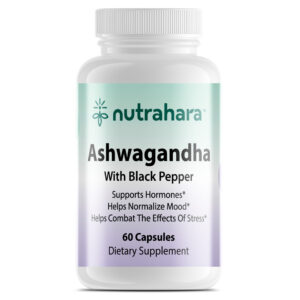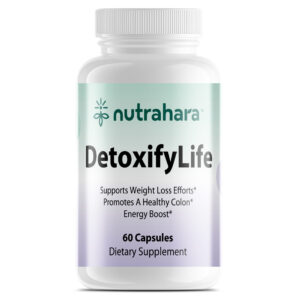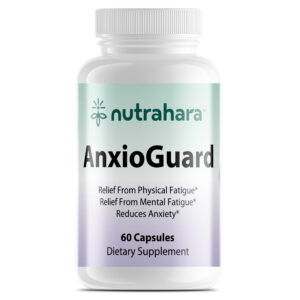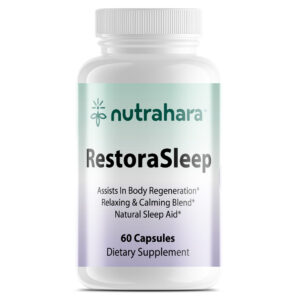
1. Herbs and Supplements – A Comprehensive Guide to Nutrahara’s Wellness Essentials
In today’s fast-paced, high-stress world, herbs and supplements have emerged as powerful tools for maintaining optimal health, preventing illness, and supporting long-term vitality. These natural remedies, drawn from centuries of Ayurvedic, Traditional Chinese, and holistic medicine, are now being reimagined with modern science. Whether it’s boosting energy, managing stress, improving digestion, or enhancing skin health, the right combination of herbs and supplements can help women feel more balanced, vibrant, and in control of their well-being.
At the heart of this growing movement is Nutrahara, a brand that blends ancient wisdom with evidence-based nutrition. With a curated range of ten premium products spanning four health categories—Stress & Mood, Digestion & Immunity, Beauty & Skin, and Energy & Vitality—Nutrahara is redefining how women approach natural wellness. Their product formulations are rooted in research, enhanced with bioavailable ingredients, and designed to fit seamlessly into a woman’s daily life.
This guide explores how herbs and supplements can support these four core areas of health. You’ll find product spotlights, real testimonials from women, expert tips, and guidance on safe and effective use. Whether you’re new to natural wellness or looking to upgrade your supplement routine, this comprehensive resource will help you choose the right herbs and supplements for your body and goals.
2. Herbs and Supplements for Stress & Mood Support
In our demanding modern lives, chronic stress, anxiety, and mood fluctuations have become increasingly common—especially among women balancing careers, caregiving, and personal goals. The body’s ability to cope with stress is largely influenced by the adrenal system and neurotransmitter balance. This is where herbs and supplements come into play, particularly those known as adaptogens and nervines.
Adaptogenic herbs and supplements help the body adapt to physical, emotional, and environmental stressors. They work by regulating cortisol levels, supporting adrenal function, and promoting homeostasis. Nutrahara offers scientifically formulated solutions to ease stress and support a calm, resilient mindset.
One standout product in this category is Nutrahara’s Ashwagandha with Black Pepper. Ashwagandha is a revered adaptogen known for reducing stress, anxiety, and fatigue while enhancing cognitive performance. The inclusion of black pepper extract (piperine) boosts absorption, ensuring the herb delivers maximum benefit. Women using this supplement often report improved sleep, less irritability, and more emotional balance within weeks.
Another beneficial offering is Nutrahara’s mood support blend featuring calming herbs like Brahmi, Tulsi (holy basil), and Shankhpushpi. These traditional Ayurvedic botanicals are time-tested for their ability to uplift mood, reduce nervous tension, and support mental clarity.
For women seeking natural, non-addictive ways to manage stress, herbs and supplements from Nutrahara offer a gentle yet effective alternative to pharmaceutical solutions.
3. Herbs and Supplements for Digestion & Immunity
Gut health is foundational to overall well-being. An imbalanced digestive system doesn’t just cause bloating or constipation—it weakens the immune system, affects nutrient absorption, and can even impact mood and skin. That’s why high-quality herbs and supplements that support digestion and immunity are essential, especially for women in various life stages.
Nutrahara has developed a targeted range of products to support this vital area of health. One standout is DetoxifyLife, a traditional Ayurvedic blend of three fruits—Amalaki, Bibhitaki, and Haritaki. DetoxifyLife gently detoxifies the colon, improves nutrient assimilation, and promotes regularity without harsh laxatives. For women experiencing sluggish digestion or feeling “weighed down,” DetoxifyLife is an ideal long-term companion.
Another powerful product is Nutrahara’s FatBlitz. FatBlitz is an advanced fat loss supplement designed to support weight management by enhancing metabolism and promoting fat burning. It’s one of the most effective herbs and supplements for individuals struggling with healthy weight management.
Together, these Nutrahara offerings promote a healthier digestive system, support detoxification, and build resilience against seasonal illnesses. Including these herbs and supplements in your routine can lead to noticeable improvements in digestion, immunity, and overall vitality.
4. Herbs and Supplements for Beauty & Skin Health
Radiant skin, strong nails, and healthy hair don’t start in your cosmetic bag—they begin within. True beauty is a reflection of inner wellness, and herbs and supplements play a crucial role in nurturing your skin from the inside out. Nutritional deficiencies, oxidative stress, and hormonal imbalances can all contribute to dull skin, acne, and premature aging. Nutrahara offers targeted solutions through its expertly formulated beauty-enhancing supplements.
One of Nutrahara’s flagship products in this category is the Collagen Booster. It features marine collagen peptides along with vitamin C, biotin, and hyaluronic acid—nutrients that support skin elasticity, hydration, and regeneration. These herbs and supplements help rebuild the skin matrix, reduce fine lines, and restore a youthful glow. Regular users often notice firmer skin, stronger nails, and less hair breakage within 6–8 weeks.
By including beauty-boosting herbs and supplements in your wellness routine, you’re investing in long-term skin health—not just superficial fixes. Nutrahara’s formulations are clean, effective, and designed for glowing results from within.
5. Herbs and Supplements for Energy & Vitality
Many women today experience persistent fatigue, brain fog, and lack of motivation—even when they sleep well and eat clean. The truth is, energy levels are influenced by multiple factors, including hormonal fluctuations, stress, nutrient absorption, and mitochondrial health. This is where the right herbs and supplements can provide natural, sustained energy without the crash of stimulants like caffeine.
Nutrahara addresses this challenge with carefully crafted formulations that enhance physical stamina, mental clarity, and overall vitality. One popular product is the Energy & Focus Blend, featuring Maca root, Panax ginseng, and Rhodiola rosea—three powerhouse adaptogens known for increasing endurance, boosting libido, and improving mental resilience. These herbs help regulate cortisol levels and support the adrenal glands, which are often taxed by chronic stress and overwork.
Additionally, Nutrahara’s B-Complex with Herbal Synergy combines essential B vitamins with Ashwagandha and Schisandra, promoting cellular energy production and emotional balance. Unlike synthetic energy pills, these herbs and supplements work with your body to restore natural vitality over time, rather than offering a temporary spike.
By incorporating Nutrahara’s vitality-enhancing herbs and supplements into your daily regimen, you can experience sustained energy, better hormonal regulation, and a renewed sense of mental sharpness—supporting both productivity and a better quality of life.
6. 7 Tips for Getting the Most Out of Herbs and Supplements
Successfully incorporating herbs and supplements into your lifestyle goes beyond just buying a bottle—it’s about knowing how to use them correctly, consistently, and safely. Here are seven expert-backed tips to help you maximize their benefits:
6.1 Tip 1: Prioritize Quality Over Quantity
Always choose herbs and supplements from reputable brands that provide transparency around sourcing, ingredient purity, and third-party testing. Nutrahara products, for instance, are rigorously tested, sustainably sourced, and free from fillers or artificial additives.
6.2 Tip 2: Match Products to Your Health Goals
Don’t just follow trends—target the specific outcomes you’re seeking, such as better sleep, improved digestion, or glowing skin. Choose herbs and supplements that support those goals with clinically supported ingredients, like Nutrahara’s Ashwagandha for stress or Collagen Booster for beauty.
6.3 Tip 3: Start with One Supplement at a Time
Introduce herbs and supplements gradually so you can monitor how your body responds. This reduces the chance of interactions and helps you identify what works best for you.
6.4 Tip 4: Take with Food for Better Absorption
Many herbs and supplements are fat-soluble or best absorbed with a meal. For instance, turmeric’s curcumin requires healthy fats and black pepper for maximum benefit.
6.5 Tip 5: Stay Consistent—But Cycle When Needed
Herbs like adaptogens may work best when used consistently for 6–12 weeks, followed by a short break. Cycling helps prevent tolerance and keeps your body responsive to the herbs and supplements.
6.6 Tip 6: Be Patient—Natural Doesn’t Mean Instant
While some results (like reduced stress) may show within days, others (like improved skin or hormonal balance) take weeks. Give your herbs and supplements the time they need to work effectively.
6.7 Tip 7: Consult a Holistic or Functional Health Professional
If you have medical conditions or take medications, talk to a qualified practitioner to ensure your chosen herbs and supplements are safe and effective for your unique needs.
7. FAQs About Herbs and Supplements
With the growing popularity of natural wellness, many women are turning to herbs and supplements as safer, gentler alternatives to pharmaceuticals. However, it’s common to have questions before incorporating them into your routine. Below are some of the most frequently asked questions to help guide your decisions.
7.1 Are all herbs and supplements safe to use?
Not all herbs and supplements are created equal. While many natural ingredients are safe, some may interact with medications, affect hormone levels, or cause allergies. Always read labels carefully and choose high-quality, third-party tested brands like Nutrahara. If you are pregnant, nursing, or taking prescription medication, consult your healthcare provider first.
7.2 How long does it take to see results from herbs and supplements?
The effects of herbs and supplements vary depending on the ingredient and your body’s individual needs. Some, like Ashwagandha for stress or magnesium for sleep, can show benefits within a few days. Others, such as collagen for skin health or DetoxifyLife for gut regulation, may take 4–8 weeks of consistent use.
7.3 Can I combine multiple herbs and supplements together?
Yes, but it’s important to ensure they don’t overlap in function or dosage. Many Nutrahara products are already synergistically formulated to combine complementary herbs and supplements in safe proportions. Avoid combining multiple adaptogens or detoxifiers without professional guidance.
7.4 Do herbs and supplements expire or lose potency?
Yes. Always check the expiration date. Store herbs and supplements in a cool, dry place away from sunlight and humidity. Encapsulated forms tend to have a longer shelf life than liquid extracts.
7.5 Can I use herbs and supplements while on medications?
Some herbs and supplements may interfere with how medications are absorbed or metabolized. For example, St. John’s Wort affects how the liver processes certain drugs. Always consult your doctor before mixing supplements with prescriptions.
8. Real-Life Testimonials from Women Using Herbs and Supplements
Hearing from real women who have incorporated herbs and supplements into their daily routines can be inspiring and reassuring. Below are five testimonials from women of different ages and health goals who found lasting benefits with Nutrahara’s products.
Sarah, 34 – Overcoming Anxiety and Mental Fatigue
“As a yoga instructor juggling back-to-back classes and clients, I often felt emotionally drained by midday. I started taking Nutrahara’s Ashwagandha with Black Pepper, and within a week, I noticed I was calmer, sleeping better, and more emotionally resilient. It’s become my go-to among all the herbs and supplements I’ve tried.”
Priya, 45 – Reviving Gut Health Naturally
“I struggled with constipation and bloating for years. After adding Nutrahara’s DetoxifyLife to my daily regimen, my digestion completely changed. I feel lighter, more regular, and even my skin has improved. It’s incredible what the right herbs and supplements can do.”
Diana, 38 – Finding Sustainable Energy Without Caffeine
“Caffeine was my crutch until it started causing anxiety. I switched to Nutrahara’s FemmePower, and the difference is unbelievable. No jitters, no crash – just smooth energy throughout the day. I finally feel in control of my body, thanks to natural herbs and supplements.”
Monica, 29 – Achieving Glowing Skin from the Inside Out
“I was spending so much on skincare but still had dry, dull skin. I started using Nutrahara’s Collagen Booster and noticed firmer, more hydrated skin in just a few weeks. My friends even asked what changed! These herbs and supplements are now a core part of my beauty routine.”
These personal stories highlight the power of clean, purposeful herbs and supplements to make a meaningful difference in women’s lives. Whether it’s for mood, digestion, skin, or energy, real wellness begins from within.
9. Conclusion: Embracing a Holistic Lifestyle with Herbs and Supplements
In an age where women are seeking balance, clarity, and strength from within, herbs and supplements have become vital tools in creating a healthier, more empowered life. They bridge the gap between ancient wisdom and modern wellness, offering a natural, science-supported path to healing and vitality. Whether you’re managing stress, boosting your energy, healing your gut, or enhancing your skin, there is a botanical solution that can support your journey.
Nutrahara has curated a thoughtful selection of herbs and supplements that are not only rooted in traditional medicine but also validated by clinical science. With products designed for four key health categories—Stress & Mood, Digestion & Immunity, Beauty & Skin, and Energy & Vitality—Nutrahara makes it easy for women to take control of their well-being using clean, targeted, and effective solutions.
This guide has explored the foundational benefits of each category, highlighted Nutrahara’s unique offerings, and shared real-life testimonials from women whose lives have been transformed. With expert tips, safety insights, and a personalized approach, you’re now equipped to make informed decisions about which herbs and supplements are right for you.
It’s time to stop chasing temporary fixes and start building a wellness foundation that lasts. Let Nutrahara’s herbs and supplements be your allies in restoring harmony, resilience, and radiance—naturally.




















